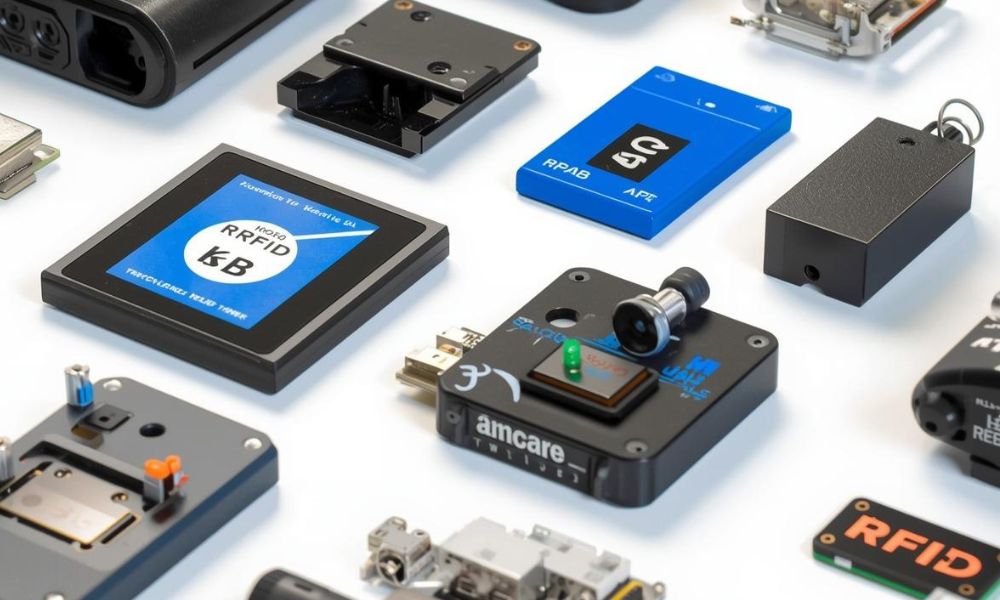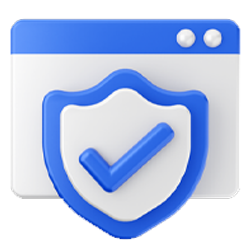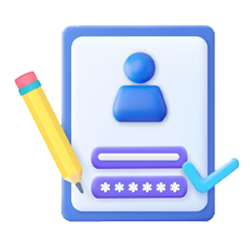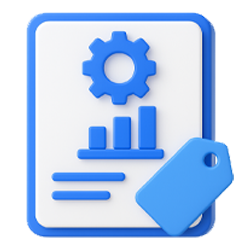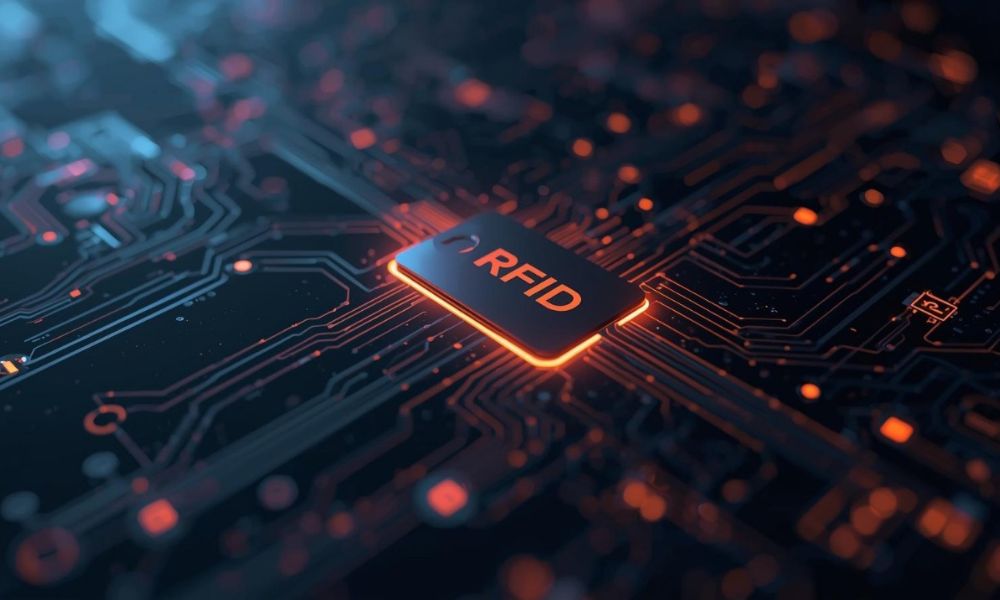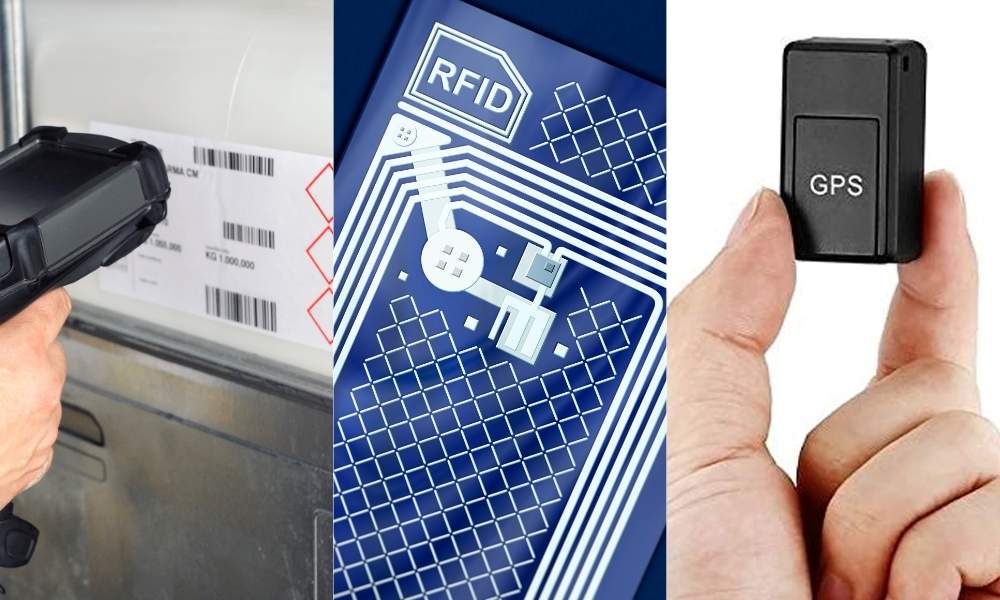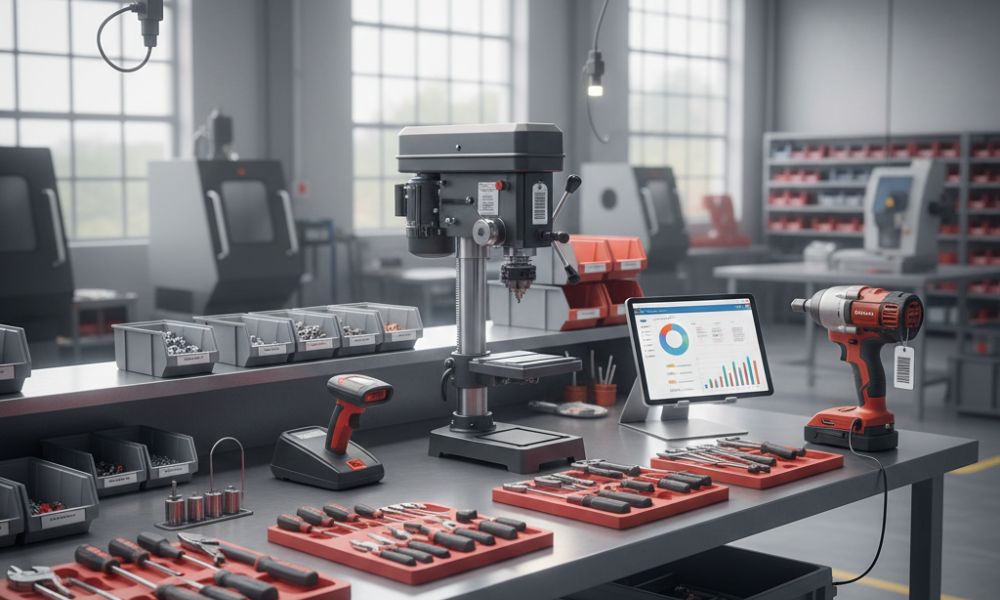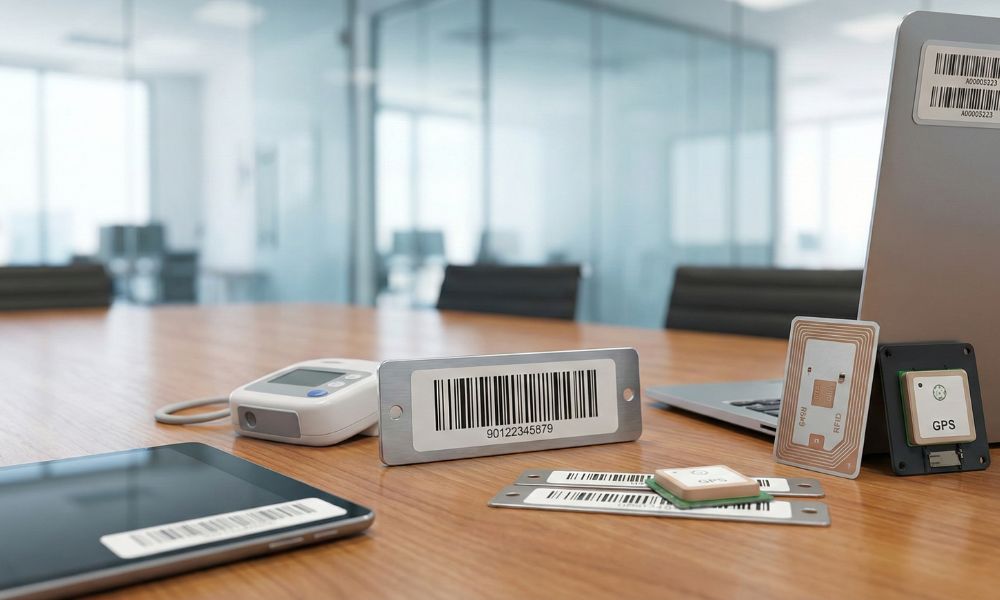Introduction
Ever wish you could audit an entire stockroom in minutes? With RFID asset tags, that’s now possible. Unlike barcodes, which require manual scanning, RFID tags read hundreds simultaneously—no line-of-sight needed. This accelerates audits and improves tracking accuracy dramatically. In this guide, we’ll explain how RFID tags work, compare passive vs. active tags, review RFID readers, and share cost and selection tips for effective RFID asset tracking.
To explore detailed use cases, technologies, and best practices, read our comprehensive guide to RFID asset tracking and learn how RFID transforms enterprise asset visibility.
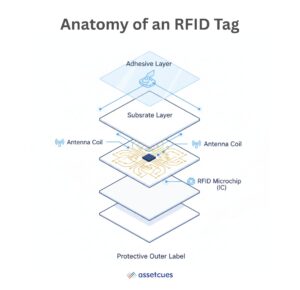
What Are RFID Asset Tags and How Do They Work?
RFID asset tags are small electronic labels with a chip and antenna that wirelessly transmit unique IDs to readers. This enables automatic identification without contact or line-of-sight. Available as thin labels or rugged tags, they streamline asset tracking while eliminating manual scanning.
In an RFID system, the reader emits radio waves to activate nearby tags, which respond with their data. The reader then sends each tag ID to the asset-tracking software, updating locations in real time. This wireless scanning works without line-of-sight, reading multiple tags simultaneously—even through boxes or walls. With a handheld RFID reader, staff can scan an entire storeroom in seconds, instantly identifying present or missing assets.
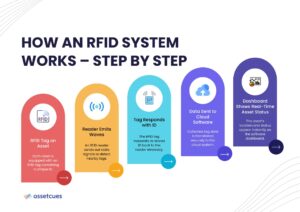
Key Benefits of RFID Tags
-
No Line-of-Sight Required:
Unlike barcodes, RFID tags don’t need to be visible or individually scanned. A reader can capture tags even if they’re inside packages or hidden by other items.
-
Bulk Scanning:
RFID enables a reader to scan dozens (even hundreds) of tags at once. Inventories that once took days can be finished in minutes.
-
Automatic Tracking:
Assets can be tracked in real time as they move. For instance, if a tagged item passes through a doorway with a fixed RFID reader, that movement is logged automatically without human intervention.
-
Data-Rich Information:
RFID tags can hold more than just an ID number – they might also store details like serial numbers, maintenance history, or timestamps. This enriches your asset records and audit trails.
-
Improved Accuracy:
By automating identification, RFID greatly reduces human error. Mis-scans and overlooked items are minimized, resulting in much more accurate inventory records.
Types of RFID Asset Tags: Passive vs. Active
RFID tags fall into two main categories: passive and active. The key difference lies in their power source and range. Passive tags draw energy from the reader’s signal, while active tags use an internal battery to broadcast their own signal.
Passive RFID Tags (No Battery, Shorter Range, Low Cost)
These tags operate without batteries, drawing power from the reader’s radio waves. Their read range is short—usually a few inches to about 20 feet. Because they’re low-cost and maintenance-free, organizations can deploy them widely. Their simplicity and affordability make them ideal for most asset tracking needs.
Passive RFID tags efficiently power most inventory and asset tracking operations. They excel at periodic scans of IT equipment, tools, and stored products. With them, organizations can tag thousands of assets cost-effectively while minimizing upkeep. However, their shorter read range means readers must stay relatively close for accurate scans.
Active RFID Tags (Battery-Powered, Long Range, Higher Cost)
Active RFID tags include an internal battery, enabling them to broadcast signals independently. This design provides a much longer read range—often 100–300+ feet in open environments. However, they’re larger, costlier, and have a limited battery life of about 3–5 years. Despite the expense, active tags are ideal for high-value assets that require continuous tracking over long distances.
Active RFID tags track high-value or mobile assets in real time across large areas. They’re ideal for vehicles, containers, and critical equipment that move frequently. Because they’re expensive, use them only when long-range, continuous monitoring justifies the cost.
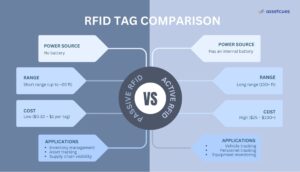
Passive vs. Active RFID Tags – Key Differences
-
Power & Range:
Passive tags have no battery and work at shorter range (a few feet up to ~20 ft). Active tags have an internal battery and can transmit over a much longer range (100–300 ft or more).
-
Cost & Size:
Passive tags are low-cost (often under \$0.50 each) and can be made very small and thin. Active tags are high-cost (about \$5–\$20+ each) and tend to be larger/bulkier due to their battery and casing.
-
Usage:
Passive RFID efficiently manages routine tracking tasks like periodic scans and inventories at minimal cost. Meanwhile, Active RFID supports specialized cases requiring continuous, long-range monitoring—such as tracking vehicles or high-value assets in real time across wide areas.
RFID Asset Tag Cost Breakdown
Basic RFID technology has become quite affordable. Below is a breakdown of typical costs :
-
Passive RFID tags:
Very low cost – roughly \$0.10 to \$0.50 each in bulk for standard labels. Even durable, specialty passive tags (for metal surfaces, high temperatures, etc.) usually cost just a few dollars at most.
-
Active RFID tags:
Higher cost – around \$5 to \$20+ each for basic active tags, and \$50+ for advanced tags with extra features (like GPS or sensors). Because of this cost, active tags are used only on high-value assets where real-time tracking is worth the expense.
-
RFID readers:
A handheld UHF RFID reader device costs about \$1,000–\$1,500. Fixed RFID reader units (for portals or choke points) are more expensive – roughly \$2,000 to \$8,000 each. (There are also simpler options like USB or smartphone RFID readers that cost a few hundred dollars, but high-performance enterprise readers with long range and fast read rates typically run in the thousands.)
-
Other costs:
Remember to budget for installation and software/integration expenses (especially for fixed-reader setups), and possibly an RFID label printer (\$2,000–\$5,000) if you plan to print and encode your own tags.
Despite these costs, companies often see a quick return on investment. The labor saved on inventory counts – and the reduction in lost or missing items – means an RFID tracking system can pay for itself within a year or two.
How to Choose the Right RFID Tags for Your Assets
Selecting the right RFID tags for each asset is important – one size does not fit all. Keep these factors in mind:
-
Asset Material & Surface
If you’re tagging metal assets, use special on-metal RFID tags (standard tags won’t perform well on metal). For plastic, wood, or other non-metal surfaces, standard tags usually work fine – just ensure you can attach them securely. Use strong adhesive or screws on rough surfaces so the tag stays in place.
-
Environmental Conditions
Match the tag to the environment. Use weatherproof tags for outdoor assets; high-temperature or freezer-safe tags for assets exposed to extreme heat or cold; chemical-resistant tags if the item will encounter harsh chemicals; and rugged, impact-resistant tags (secured with bolts or epoxy) for assets that undergo heavy use.
-
Read Range Requirements
First, define your required read range before choosing an RFID type. For short distances—like scanning assets within a room or doorway (up to 20–30 feet)—passive tags are sufficient. However, if you must track assets across wide areas or need real-time visibility over hundreds of feet, opt for active RFID tags or another long-range solution to meet those needs.
-
Tag Form Factor & Attachment
Select a tag form factor that suits your asset and won’t affect its use. Options include labels, hard tags, cable-tie tags, or cards, each designed for different environments. Secure the tag properly—use adhesive for smooth surfaces or screws, rivets, or zip-ties for rugged equipment. Finally, position tags on visible, accessible areas where readers can scan them easily without obstruction or damage.
RFID Readers – Fixed vs. Handheld
An RFID system uses readers to scan the tags. The two main types are fixed readers and handheld readers.
Fixed RFID Readers (Stationary Scanners)
Fixed RFID readers are mounted at specific points—like doorways or conveyors—to automatically scan passing tags. They deliver continuous, hands-free monitoring of assets moving through those zones. For instance, a warehouse exit reader can instantly log every tagged item leaving the building, ensuring accurate, real-time tracking.
Fixed RFID readers deliver automatic, 24/7 tracking with no manual effort required. Once installed, they continuously capture tag data from their set location. However, they cover only fixed areas and can be costly to deploy. Therefore, they work best at critical points—such as entry doors or high-value storage zones—where constant monitoring is essential.
Handheld RFID Readers (Portable Scanners)
Handheld RFID readers are portable scanners used to read tags on demand. They’re perfect for inventory checks or locating specific assets directly. These readers provide flexibility and lower upfront costs than fixed units but require manual use. Since they’re not continuous scanners, they only capture data when actively operated.
In practice, many organizations use a combination of both reader types: fixed readers at key choke points for automatic tracking, and handheld readers for periodic audits and spot checks. This gives you real-time monitoring where it’s most needed, plus the freedom to scan any area with a portable device.
Other RFID Hardware (Antennas & Printers)
-
RFID Antennas:
Antennas connect to fixed readers and emit the RF signals that “excite” the tags. Proper antenna placement defines the reader’s coverage area and ensures tags are read only in the intended zone. (Antennas are relatively inexpensive, but they are crucial for optimizing your read coverage.)
-
RFID Printers:
These printers can simultaneously print a label and encode its RFID chip. An RFID printer lets you produce your own RFID asset labels on demand – printing text or barcodes on the sticker while programming the tag’s ID. This is especially useful for large deployments where you need many tags with specific data.
Frequently Asked Questions
Q: How long do RFID asset tags last?
A: Passive RFID tags have no battery, so they can last many years – often 10–20+ years (essentially the life of the asset) as long as the tag isn’t physically damaged. Active RFID tags rely on an internal battery, which typically lasts around 3–5 years before needing replacement.
Q: How much does an RFID reader cost for asset tracking?
A: A handheld UHF RFID reader is about \$1,000 to \$1,500. Fixed RFID reader units are more expensive – roughly \$2,000 to \$8,000 each. (There are also lower-cost readers like smartphone-based RFID adapters or USB desktop readers for a few hundred dollars, but high-performance readers usually cost a few thousand.)
Q: Can RFID tags be used on metal assets or equipment?
A: Yes—but only with on-metal RFID tags specifically designed for metal surfaces. Regular tags fail on metal because it disrupts the antenna signal. On-metal tags include insulation or tuned antennas that ensure reliable reads. They’re usually housed in durable cases and mounted with adhesive or screws for secure attachment.
Conclusion & Call to Action
RFID asset tags and hardware enable fast, accurate, and automated tracking across operations. With the right mix of passive and active tags plus readers, you gain real-time visibility and faster inventories while reducing losses. As RFID grows more affordable and scalable, it’s the perfect time to upgrade from barcodes to a smarter, more efficient system.
Ready to modernize your asset tracking? Contact us to request a free demo of our AssetCues RFID asset tracking solution. See how it can save you time on audits, prevent asset loss, and give you greater visibility and control over your organization’s assets. Our team is happy to answer any questions and help you get started on your RFID journey.

